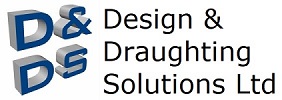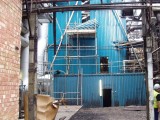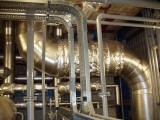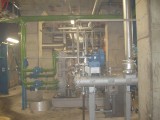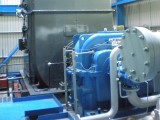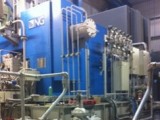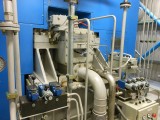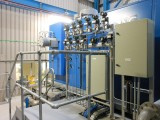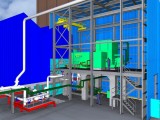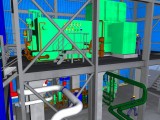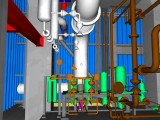
Trillium Allen Steam Turbines
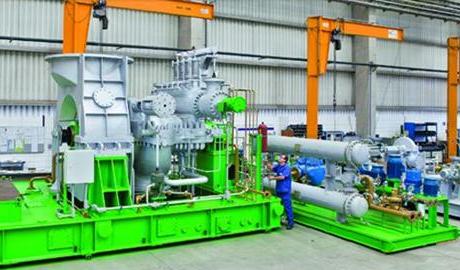
Introduction
The main plant division of the company engineers and supplies complete power generation packages. These packages include the company’s own design of turbine (manufactured by NG Metalurgica, its partner in Brazil), gearboxes, generators, oil systems, condensing plant and other pieces of major plant equipment.
The company also operates a busy spares and aftermarket division. With a long history, having produced steam turbines since 1907, there are a large number of machines still in operation around the world. New spare parts can be supplied for any Allen turbine still in operation. With their in house design department, modifications and re designs to turbine components are also offered for up-rates or to suit changes in steam conditions.
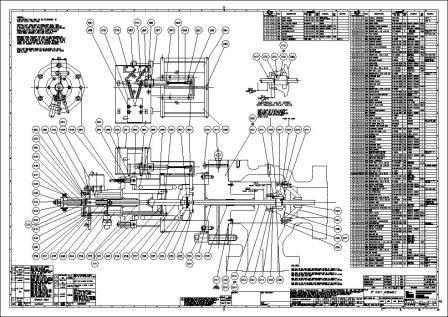
What we do for Trillium Allen Steam Turbines
With new main plant projects, we work closely with the company’s project managers and applications engineers to integrate all of the equipment into a total package. We produce the complete range of site drawings including plant arrangements, foundation drawings, P&IDs and pipe arrangements.
For the spares and aftermarket division we produce detail manufacturing drawings for components within the turbine. New drawings may be required due to different manufacturing techniques being used or simply because the old drawings are difficult to read. For machines with up-rates or changes to operating conditions, we draw the new components needed for the modifications. In addition we also produce replacement pages or complete sections for instruction manuals on modified machines.
Examples of some of our work
Replacement diaphragms for old turbine
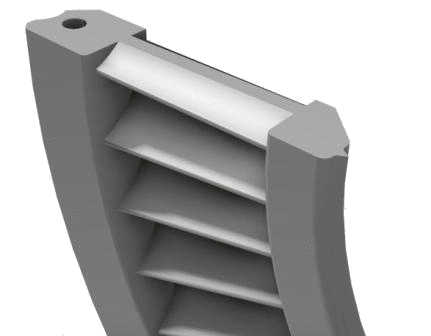
Steam turbine diaphragms are complex components to manufacture and to ensure the turbine operates efficiently, the vanes must be positioned very accurately. On some of the older Trillium Allen machines the diaphragms were produced by accurately positioning pre formed vanes and then casting an inner ring and outer ring around the vanes to form the diaphragm. At the time, the company had it’s own foundary and produced these cast diaphragms in house. Due to the specialist nature of this work it is no longer viable to manufacture using this process.
When a customer required a complete set of replacement diaphragms for a multi stage turbine (8 diaphragms) a re design was required. We produced a new set of drawings for each diaphragm based on a fabrication manufacturing process. Because the new diaphragms would be fabricated with a substantial amount of welding, shrinkage allowances had to be incorporated into the component detail drawings. The dimensions on the final machining drawings ensured the new diaphragms would be a straight swap for the existing ones.
New turbine in a sugar refinery
A large sugar refinery in the UK already had two of the companies turbines running in its plant, the primary machine installed in the 1980’s and an older smaller machine used as a back up. A new, higher power machine was required, with the plan to remove the oldest machine and retain the newer of the two existing as the back up.
We were involved with the project from the start attending the initial project meeting with the customer at the refinery.
The initial plan was to install the new turbine in the existing powerhouse alongside the other two machines. Two spare foundation blocks existed from machines installed when the powerhouse was built in the 1940’s and which had long since been taken out of service. These would require significant uprating and modification but could still be a cost effective solution.
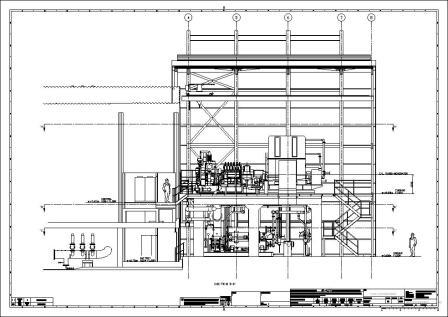
We took some measurements at site and a copy of the original powerhouse construction drawings supplied by the refinery. A number of layouts were produced and after discussion with the appointed civil engineer it became apparent that installing in the existing powerhouse would be both difficult and expensive. This information was presented to the refinery and it was decided to investigate building a new powerhouse in a space adjacent to the existing one.
Having taken measurements of the available space we produced a layout of the equipment within a new building. Although space was limited with existing buildings and plant surrounding the area, it was feasible and after discussion at the next project meeting it was decided to go ahead.
Detailed layouts and arrangement drawings were produced and we worked closely with a number of companies (civil design engineers, civil construction, steel erectors, pipework contractors, crane manufacturers, heavy lifty specialists, etc.) to ensure that the project met the full requirements of both Trillium and the refinery. As part of this process we attended the fortnightly meetings held at site throughout the duration of the project.
Finally we produced a full set of as built drawings including a plant arrangement, pipe arrangements and P&ID’s (process & instrumentation drawings).
